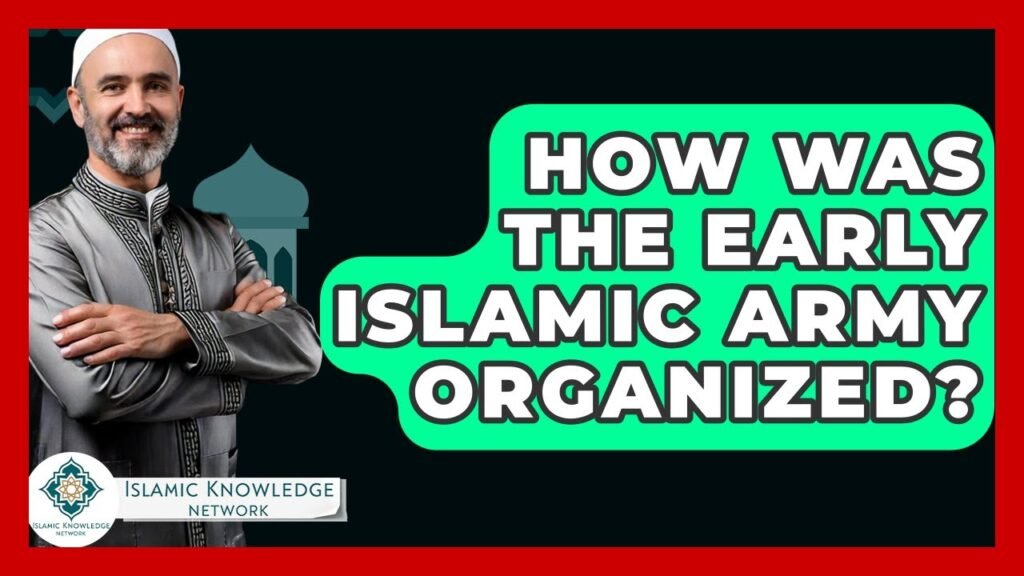You are here to read: How Was the Early Islamic Army Organized in History? – A Thoughtfully Written Guide Offering Spiritual Wisdom and Travel Advice for Every Pilgrim who is going on holy journey of Hajj or Umrah.
How Was The Early Islamic Army Organized? – Islamic Knowledge Network
Understanding the structure and organization of the early Islamic army provides crucial insights into the rapid expansion of Islam during the 7th century. Founded on principles of unity and purpose, the early Muslim military system was a vital component of the burgeoning Muslim community. Through strategic leadership, innovative tactics, and a robust support network, early Islamic armies were able to spread the message of Islam across vast territories, overcoming numerous obstacles and challenges along the way.
At Airlink Hajj and Umrah, we believe that knowledge of Islamic history enriches our spiritual journeys and enhances our understanding of the significance of Hajj and Umrah. Our blog features all the latest updates and insights related to these sacred pilgrimages, connecting the past with the present. By delving into the organization of early Islamic forces, we not only celebrate our rich heritage but also draw parallels to the communal spirit found in contemporary acts of worship. Join us as we explore the military foundations that facilitated the growth of a faith that continues to resonate with millions around the world today.
How Was the Early Islamic Army Organized in History?
The early Islamic army, established during the time of the Prophet Muhammad and the subsequent Caliphs, was a revolutionary force. Initially, it comprised volunteers from various tribes, unified by the message of Islam. This diverse composition allowed for a broad range of skills and military tactics, which were pivotal during early battles such as Badr and Uhud. The commitment of these early soldiers was often motivated by their faith, creating a passionate and resilient fighting force.
As the Islamic empire expanded, the army’s organization evolved. Under the Caliphate, particularly during the Umayyad and Abbasid dynasties, a more structured military hierarchy emerged. Commanders were appointed to lead specific units, while the army was divided into cavalry and infantry, enabling more effective strategy and coordination during battles. Additionally, the introduction of professional soldiers began to transform the early Islamic army into a formidable military institution.
Understanding the dynamics of the early Islamic army is crucial for appreciating the rapid expansion of Islam. If you want to stay updated on the historical significance of such events, alongside current Hajj and Umrah information, visit our blog for the latest insights. At Airlink Hajj and Umrah, we aim to provide you with all the necessary updates for a fulfilling pilgrimage experience.
FAQ on How Was the Early Islamic Army Organized in History?
FAQ 1: What were the primary units of the early Islamic army?
The early Islamic army was primarily organized into divisions called "saff," which were composed of infantry, cavalry, and archers. Units varied in size and specialization according to their role in battles.
You're at the middle of this awesome post at AirlinkHajjandUmrah.com through: How Was the Early Islamic Army Organized in History?. Keep reading, it gets better!
FAQ 2: How did the Prophet Muhammad contribute to the organization of the army?
The Prophet Muhammad established a centralized command structure, appointed leaders for various tribes, and created a sense of unity among diverse groups, making the army more cohesive and effective in military campaigns.
FAQ 3: What role did volunteers play in the early Islamic army?
Volunteers were crucial in the early Islamic army, as many followers willingly joined to defend and spread their faith. This passion and commitment often translated into effective fighters.
FAQ 4: How were battles and strategies planned in the early Islamic army?
Battles were usually planned through consultations among leaders and experienced warriors. Strategies often revolved around mobility, surprise attacks, and utilizing local knowledge of the terrain.
FAQ 5: What impact did the early Islamic army have on the expansion of Islamic territories?
The early Islamic army played a vital role in rapid territorial expansion, successfully conquering vast regions, including the Byzantine and Sassanian empires, which facilitated the spread of Islam and its cultural influence.
That wraps up How Was the Early Islamic Army Organized in History?. Thanks for sticking with us till here! Share this: How Was the Early Islamic Army Organized in History? with your friends.
Check our homepage at Air Link Hajj & Umrah for more awesome updates.
Some interesting posts are: 1: Umrah Mubarak, 2: When is Umrah closed 2026?, 3: When does Umrah start after Hajj 2026?
Mushu, an experienced Saudi Arabia traveler and writer, shares insightful tips and spiritual reflections to enhance Hajj and Umrah journeys for fellow pilgrims. He has been to Makkah and Madina from 2016 to 2023 many times and his posts will reflect this.







